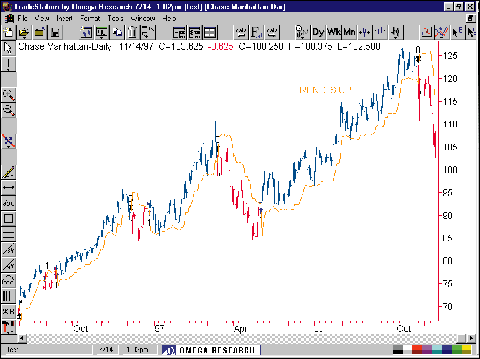NEW TECHNIQUES
by Andrew Abraham
Here's a volatility indicator, presented here with simple trend rules for trading various markets.
New traders quickly become familar with two adages: "The trend is your friend," and "Let your profits run and cut your losses." Many of us, however, have learned the hard way that these things are easier said than done. Why is that? One reason is lack of recognition, since the trend itself is rarely clarified and defined, let alone where it starts and ends. So we need a clear explication of what a trend is as well as where its beginning and its end are.
SIMPLE ENOUGH
Simply, if the trend is considered up, then the trend of prices are composed of upwaves and the downwaves are countertrend movements. Downward trends are the opposite, seen as downwaves with countertrend upwaves. Using several tools and functions, we can design a quantifiable approach to defining these waves. My favorite is the volatility indicator, which is a formula that measures the market volatility by plotting a smoothed average of the true range. The true range indicator originates from the work of J. Welles Wilder Jr. from his New Concepts in Technical Trading Systems. The definition of the true range is defined as the largest of the following:
- The difference between today's high and today's low
- The difference between today's high and yesterday's close, or
- The difference between today's low and yesterday's close.
The volatility indicator is used as a stop-and-reverse method. Let's say the market has been rising, then the volatility indicator is calculated each day and subtracted from the highest close during the rising market. The highest close is always used, even if there has been a series of lower closes since the highest close. If the market closes below the volatility indicator, then for the next day, the current reading of the volatility indicator is added to the lowest close. This step is followed each day until the market closes above the trailing volatility indicator.
We now have a definition of the trend. An upward trend exists as long as the volatility indicator is below the market and a downtrend is in force if the volatility indicator is above the market. To visualize these waves, we color-code the uptrends blue and the downtrends red (Figures 1 and 2).
